Well, it’s another delicate subject. No, not Chinoiserie. I’m done with that one for a while. Well, not completely done. :]
However, there are now at least two subjects on this blog that I need to tread lightly with.
The other hot button topic is:
ART
Why is art a sensitive subject?
Well, it was mostly just one person who, never mind… Let’s just say she was hugely angered by even the idea of anyone doing prints. And, since I was suggesting that people might want to do that, oh boy! I could go on, but I won’t. Of course, I realize that she’s trying to make a living. Yeah, me too. lol
I admire people who have the ability to paint and paint well, immensely.
And, while I can appreciate many styles of art, I adore old art masterpieces.
You know, paintings by geniuses (I’ll refrain from calling them dudes this time) mainly from the 17th, 18th, and 19th centuries—Dutch, Flemish, Italian, English, and French. Of course, there were fine painters in the U.S. and many other countries, too.
You know, I was thinking of doing another post about Gerald Bland (Gerald Sublime) and “how to get the look.”
But, then I realized that to get the Gerald Bland look, it’s about the following:
- Exquisite classical architecture
- White walls, accented with black or very dark gray, greenish doors
- Natural fiber rugs
- White slipcovers – Everything else in either olive, chartreuse, maybe a shot of blue upholstery. Otherwise, no pattern on the fabrics, except for the odd pillow.
- Fine antiques
- Some modern classics
- gold accents
- black accents
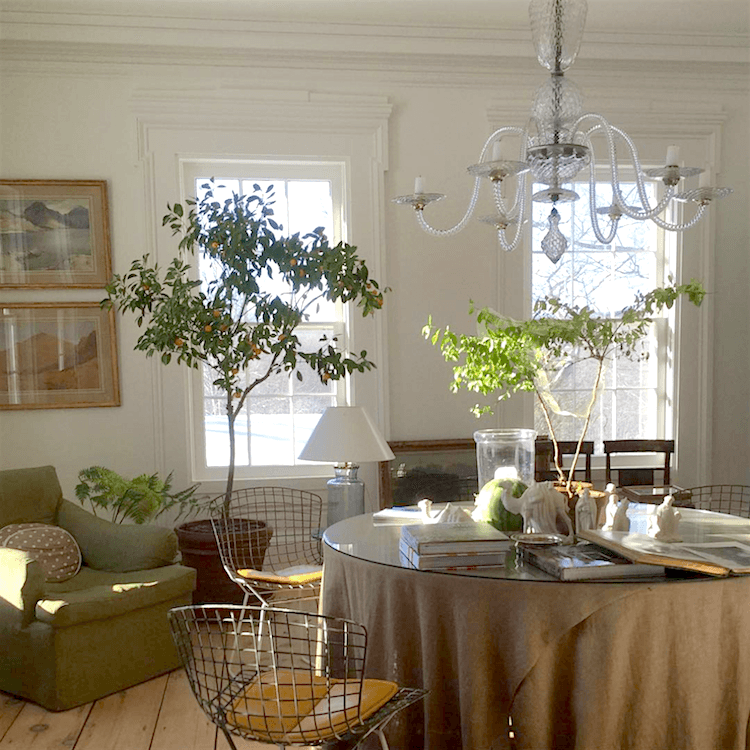
Glass accents, like this magnificent Murano glass chandelier. I saw some Murano beauties when I was in Venice nearly five years ago.
Below are some vintage chandeliers very similar to Gerald Bland’s.

However, the star of every one of his interiors is his phenomenal collection of Art Masterpieces –
So, I went hunting for some on the Internet.
You can find some glorious pieces on First Dibs and Chairish, and sometimes on eBay and Etsy. But, with antiquity and skill comes a hefty price tag.
Below is a widget with some beauties I found.

Here is where I need to stop for a second because some of you have educated me over the years. Or reminded me of your favorite places to shop for art. (especially cheap art)
One is the many fabulous online auction houses. You can get some incredible deals– if you’re lucky and every knowledgable bidder is out on their yacht the day the item comes up for bidding. lol
I do love Live Auctioneers, however, and they have thousands of art masterpieces.
And, then, there’s Facebook Marketplace. That’s a terrific source for cheap everything.
I have to say it’s a lot of fun to look there, too.
There are local artists, local auctions, flea markets, fairs, thrift stores, tag/garage/yard sales, and student artists.
If you’re the fantastically talented Maura Endres, then you’ll have your own resident artist to fill your walls with glorious art. Maura’s daughter is a fantastic artist!
I better not forget adult artists. There are several fantastic sources in my Etsy Guide for affordable original art.
I think that most people become artists for the love of art, not so much the money.
However, a few do make a handsome living through their artistic endeavors, but the majority, no. That goes for musicians, dancers, actors, and those involved in the decorative arts like painting. Should it be that way? Well, I don’t think so, but I don’t make the rules.
Okay, this is bringing me to an idea I’ve been mulling around for quite a while. And, it relates to my new apartment that’s had to take a back seat recently.
I have a lot of empty walls in my new place.
And, some small walls, too.
Plus, I have an expensive and particular taste in art. haha.
I mean, if I could find a student who could paint the way I want, I’d gladly pay them. But, I don’t know if there are too many 20-year-olds-painting in the Baroque style of the 17th-century Italians.
So, I came up with a new idea. And, I want to run it past you in case anyone can provide some additional information. This is actually a continuation of what I touched on in the chartreuse post from last Wednesday.
I really would love to have some giant 17th-century-type paintings flanking my fireplace. Forget what’s currently there.
Something like this.
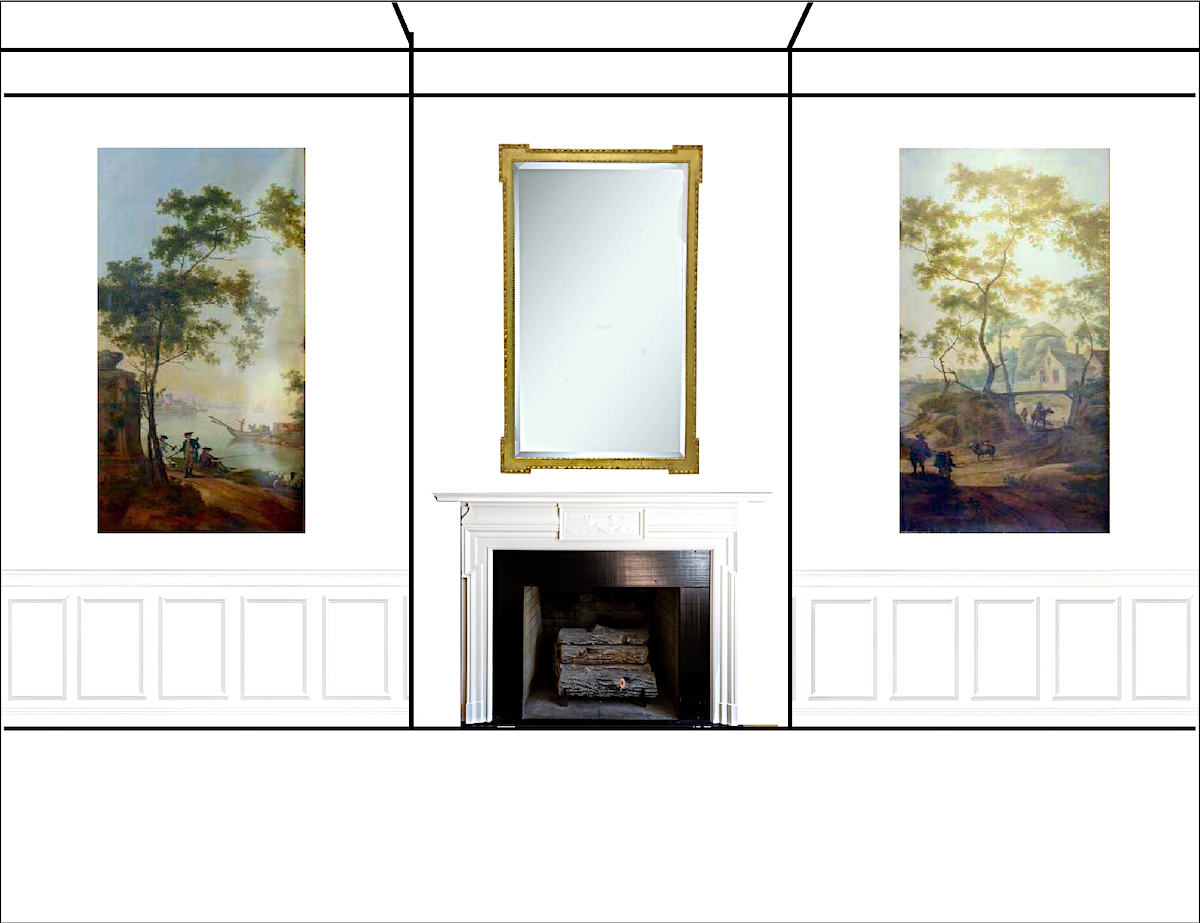
And, yes, that would include a new fireplace mantel.
I swiped that one from William McLure’s home. (well, one of them)
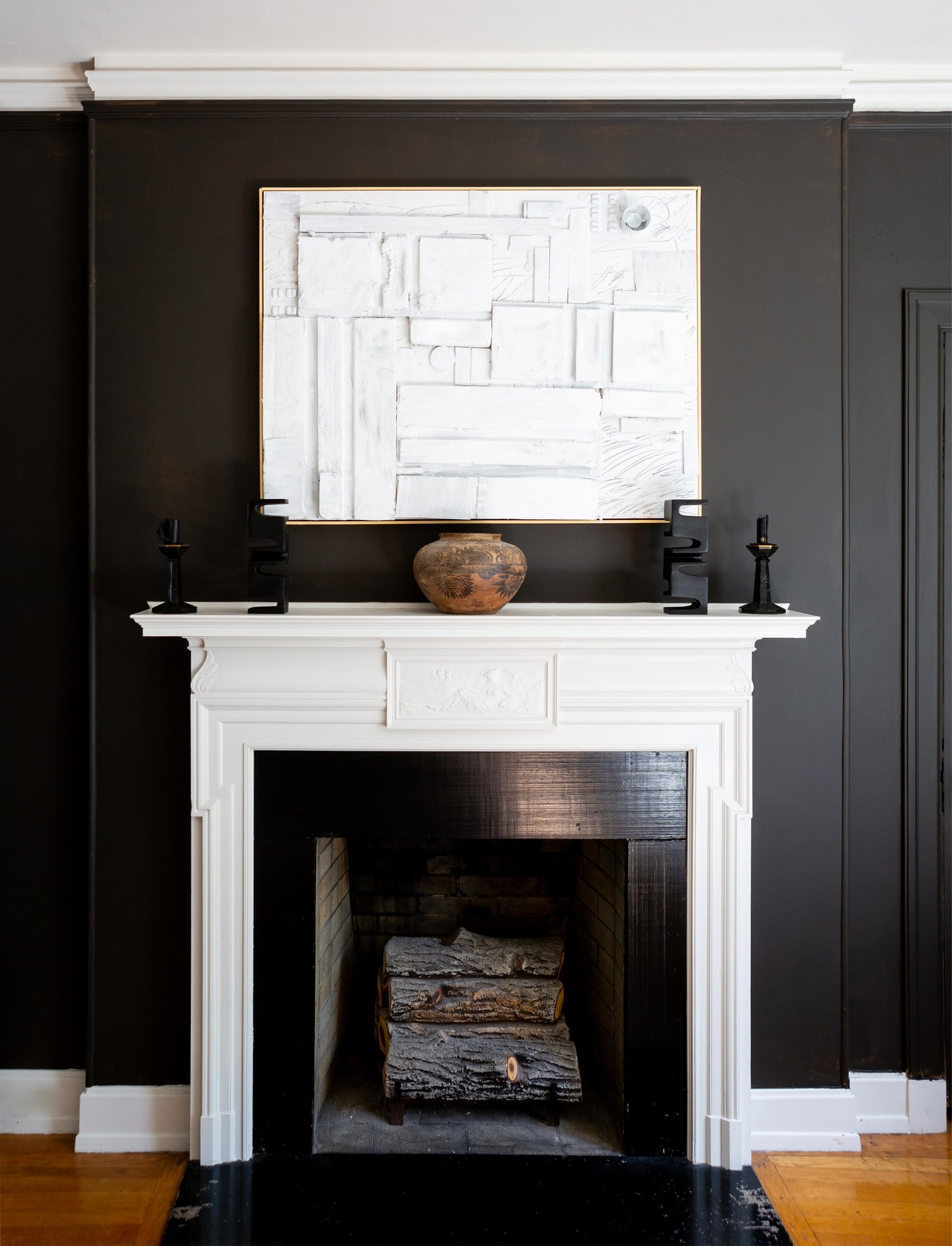
William’s mantel is perfect! We looked at it here as well as some other wonderful mantels.
But, getting back to the art. Based on the other fine art masterpieces I’ve found, I know that these two pieces in Gerald Bland’s shop are way out of my price range.
However, I still want two large art masterpieces.
Okay, yes, there are the companies like 1st Art who did my Melchior de Hondecoeter. I remember when they created that painting for me. The first go-around was pretty awful. It looked like a child had done it, and I told them, no thank you and I wanted my money back. But, the guy was so insistent on me giving them another chance. And, if I still didn’t like it, he would then give me a refund.
This time, the painting looked exactly like the photo, and I was happy.
Now, 1st Art does have numerous old master paintings in their library.
Also, they’ll paint ANYTHING you like. If you go that route, I suggest giving them the highest res image you can find. I would most likely not use their image unless you want a blurry-looking painting. Also, if the image needs color correcting, you can do that, and then they’ll be able to use those colors.
Their stand sizes go up to 48″ x 72″. And while you can get an even bigger painting, the price goes up dramatically by adding only a few inches. 48 x 72 is about the smallest I would like. For my two fireplace walls, my ideal size is about 50″ x 80″. Actually, Bland’s Jan Van Os paintings are 50″ x 98″. My available wall space is about nine feet (108″) So, those paintings would work.
However, I have another idea. And, if I could pull it off, I think it could be really cool as well as super cheap.
Okay, one of my favorite posts about cheap art touched on this idea. The post is about getting super cool art for free or almost free.
Oh, by golly gee. That post was from March 18, 2020. Aside from the cheap art, it’s a good read to look back at the beginning of the pandemic, one year ago.
However, in the post (the link is above) are also some great sources for free, high-resolution art.
But, here’s the thing. The res isn’t high enough for the size art I am wanting.
However, I researched it, and there is software available to take care of that issue. In other words, you can print something ten times bigger than it’s capable of without the image getting blurry or pixelated. How cool is that! Of course, you can also probably pay to get this done.
And then, of course, printed.
The thing is, I don’t know how much the printing is going to cost. Oh, and ideally, the printing should be on canvas.
Some places will do that too. Oh, I found one, and they will stretch your canvas, as well!
Now, I, you, we, could stop right there and hang our gorgeous art masterpiece print. That is unless you wish to have it framed. That is going to be super expensive, however.
Alas, it’s going to look like a print, most likely. But, maybe if the source does a good job, it’ll be an awesome print.
However, you can paint on the canvas. I did google all of this, and there are many articles and tutorials on this topic.
It’s also possible to go over the image with actual paint. I would probably use acrylic since it dries so much faster, and the clean-up is easier too. Now, would I go over the entire 4-foot by 7-foot piece of art, times two? Well, nice idea, but I only see myself painting areas that look a little fuzzy or that I want to hi-light a little.
What I think would be a good idea unless one has experience is to have a couple of smaller prints made and stretched to experiment on. In fact, maybe do that first.
The gel medium or varnish alone might be enough to look at an actual painting.
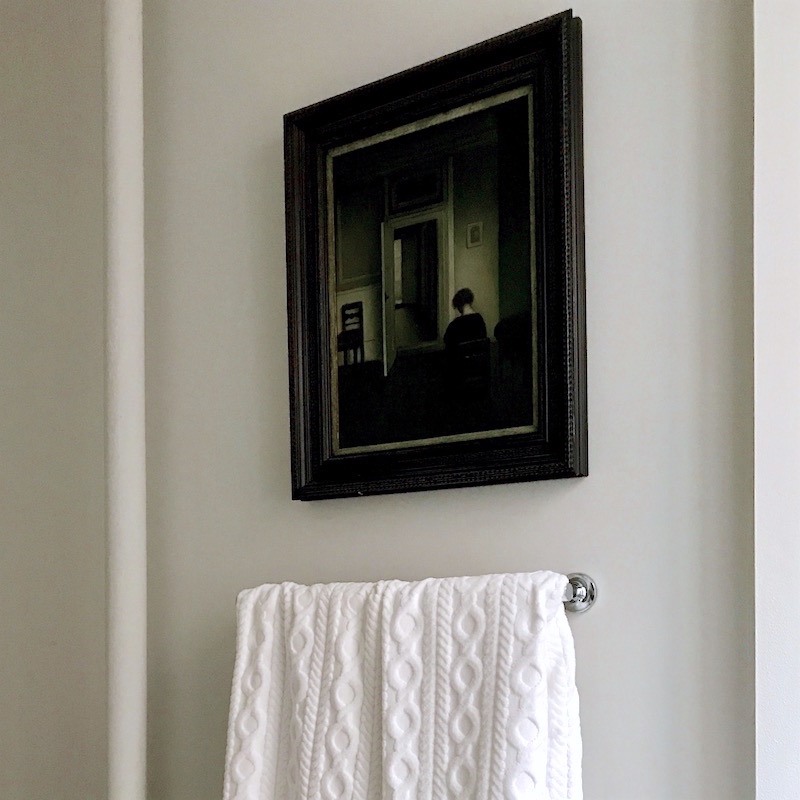
It’s possible that my “Holsøe” was created in that manner. That’s my old bathroom. For more about Carl Vilhelm Holsøe, please see this beautiful post about transom windows.
I will finish off with a Baroque Italian artist, Marco Ricci who I discovered the other day.
I wasted spent too much time looking for his most beautiful paintings. His work is amazing!
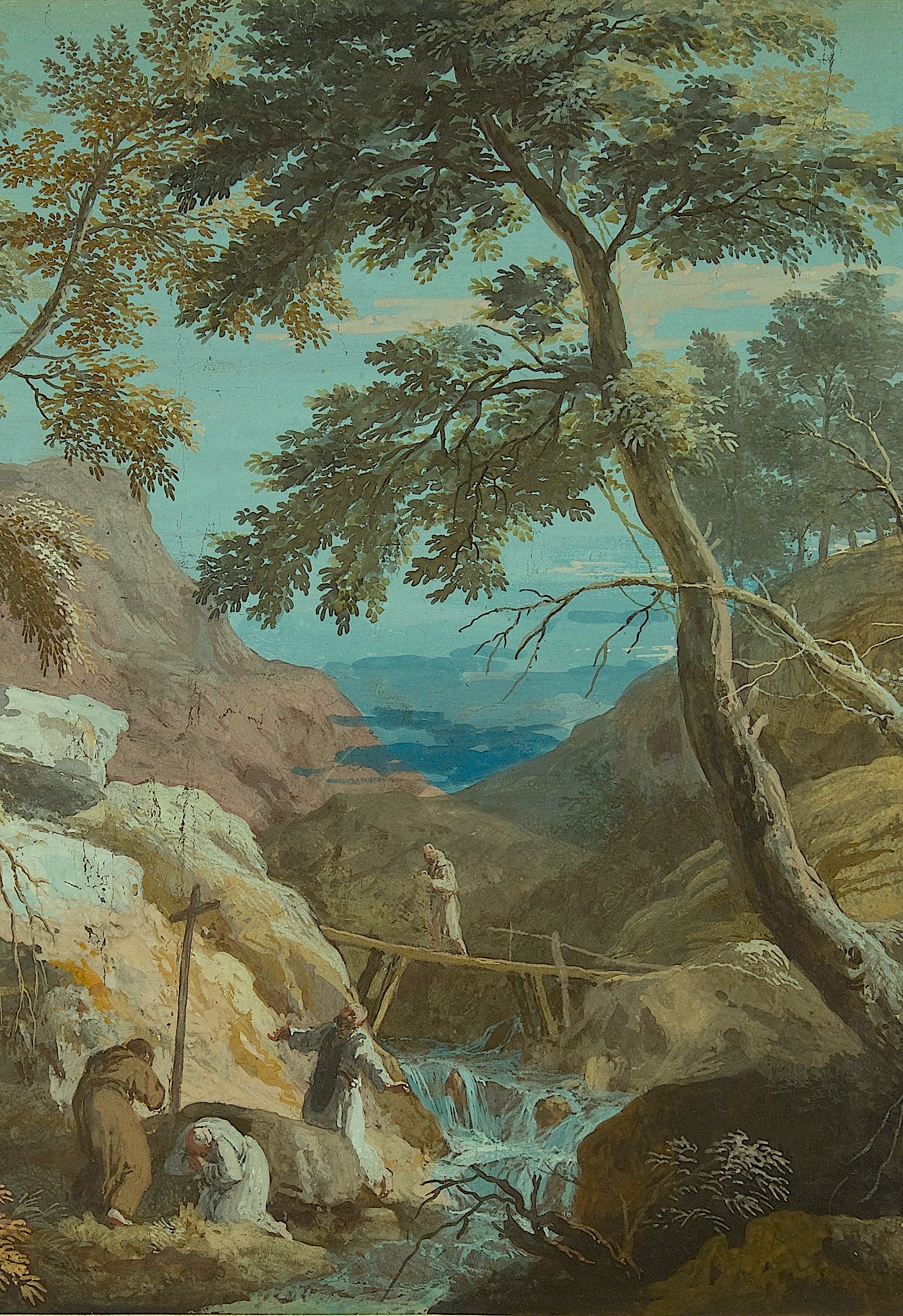
Metropolitan Museum
This is the first painting I found by Marco Ricci. I love that it has an almost paint by numbers look. It doesn’t look like the typical Baroque painting to me. Actually, this one, I believe, is gouache paint. The leaves look like watercolor, but maybe he thinned down the gouache. This is one of their free downloads.
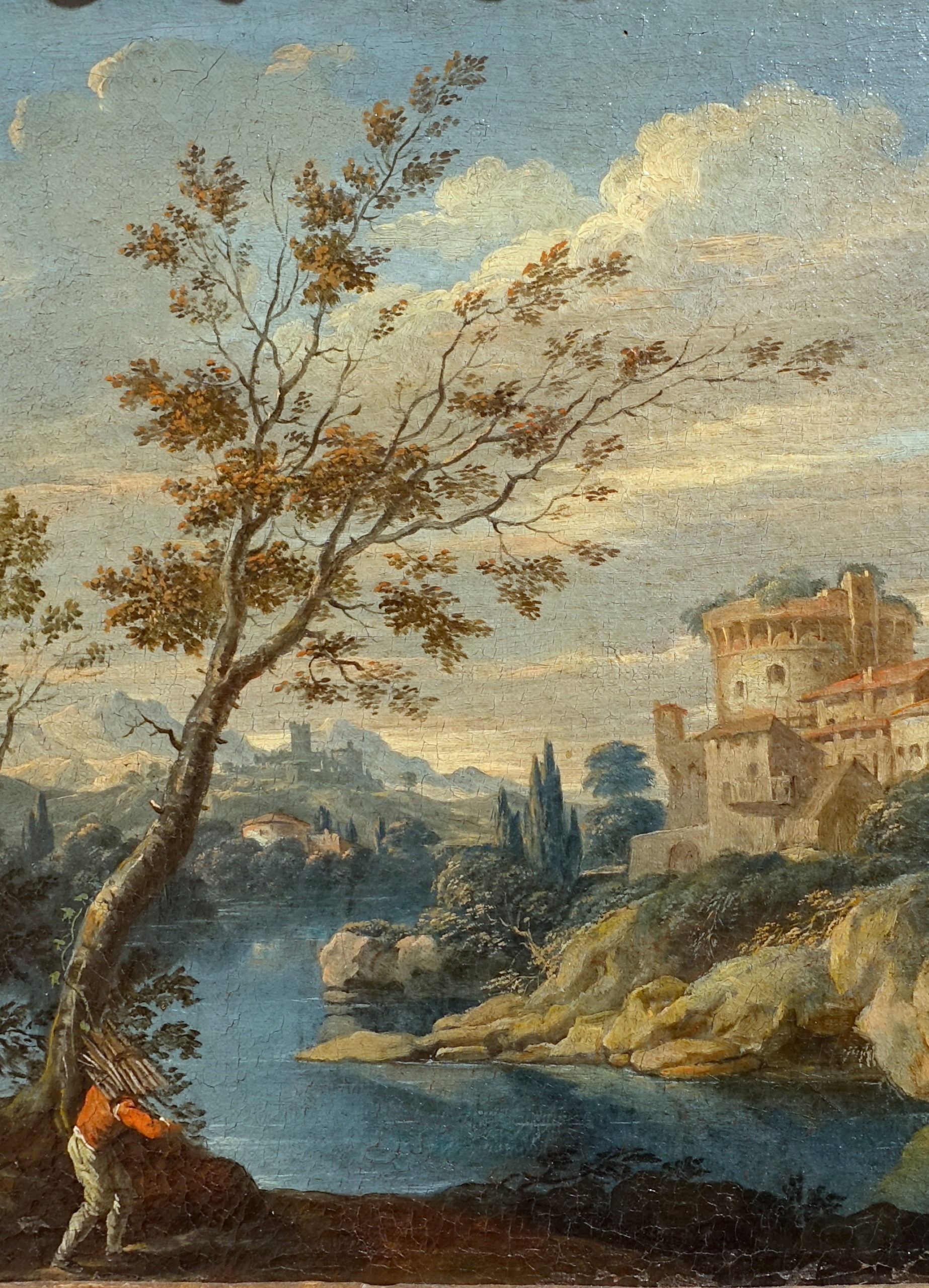
A_River_Landscape_with_a_Figure,_by_Marco_Ricci,_1710s,_oil_on_canvas_-_Blanton_Museum_of_Art_-_Austin,_Texas
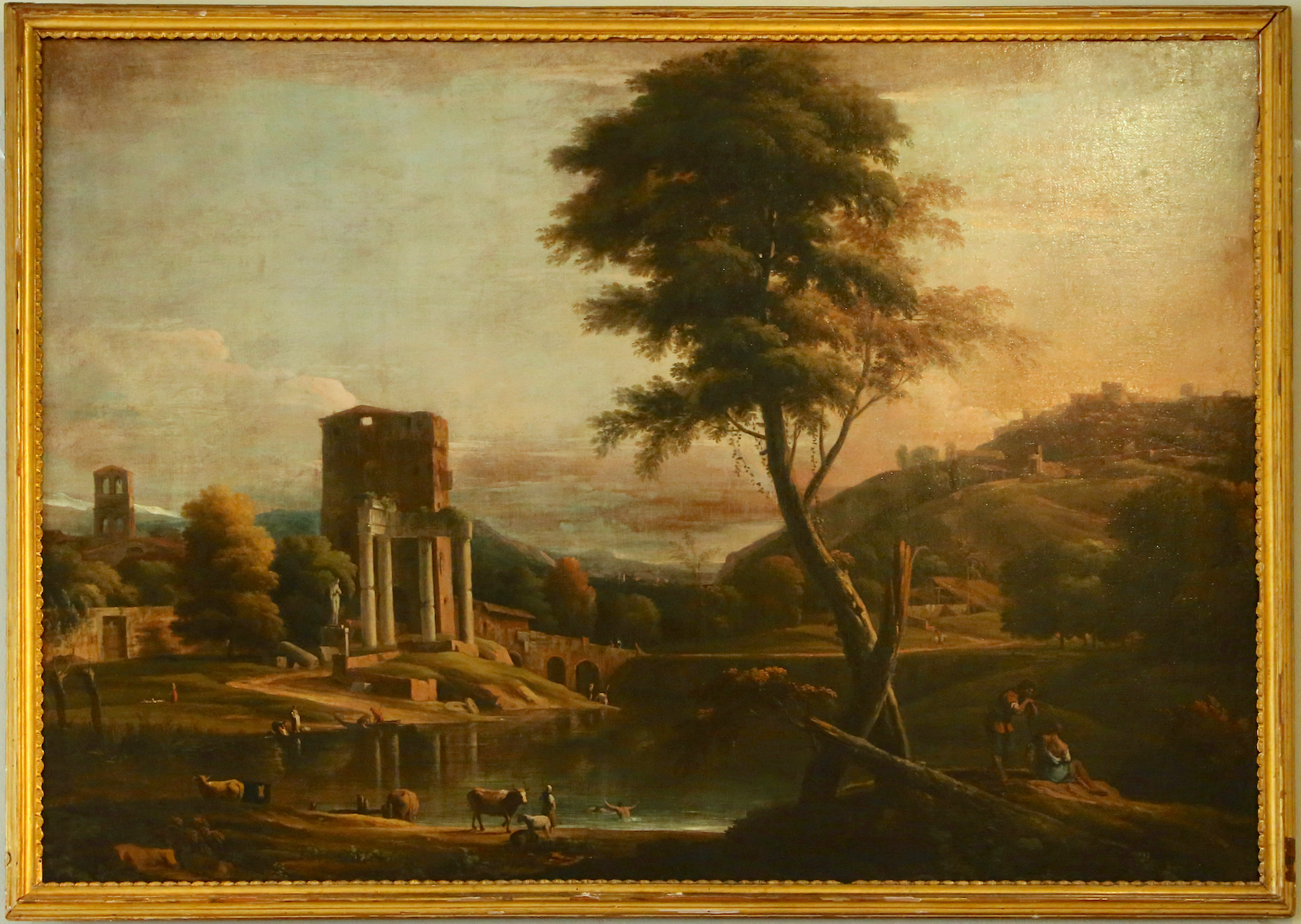
Marco_ricci,_campagna_romana_con_rovine_e_un_laghetto
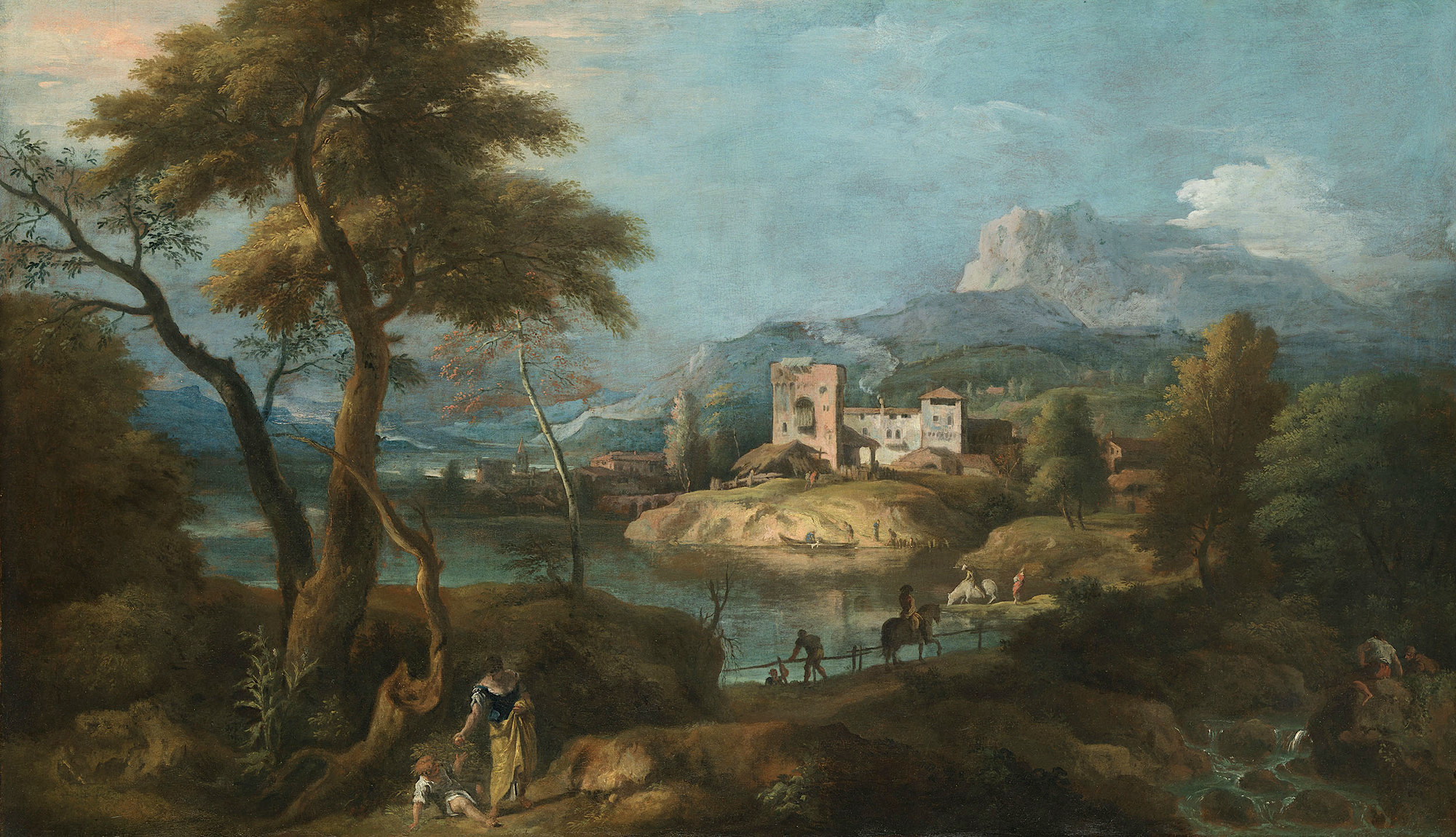
Marco_Ricci_(Belluno_1676-Venice_1730)_-_Landscape_with_a_Woman_and_Child_-_RCIN_406989_-_Royal_Collection
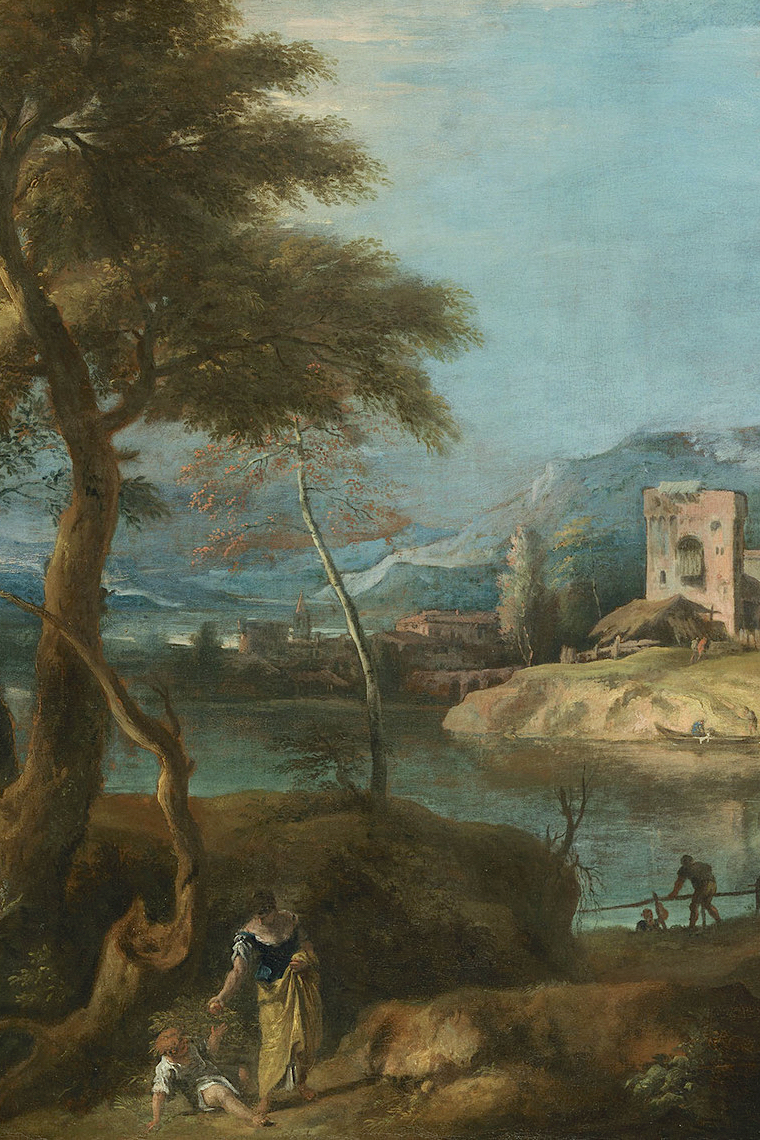
And, this one’s a detail that would make a beautiful composition for a vertical landscape.
Below is a piece by Giuseppe Zais is an 18th-century artist who paints in a similar style.

Giuseppe Zais Landscape with a Ruined Tower
probably 1760-80
Oil on canvas, 70.2 x 95.9 cm
Bequeathed by the Misses Cohen as part of the John Samuel Collection, 1906
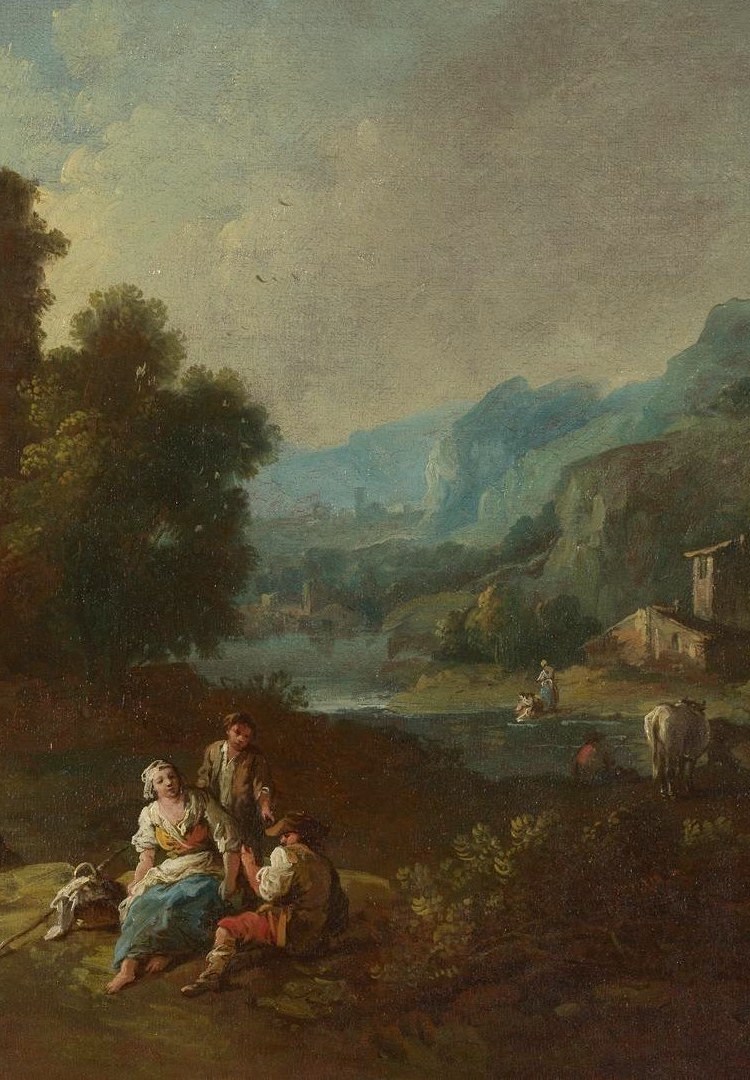
And, here is a vertical detail from that image.
Hope you enjoyed my idea for turning an inexpensive digital art print into an art masterpiece. Please remember that these old paintings are part of the public domain. But, of course, you’d be using them for your personal use.
For more great sources for digital art, please go back to this post to check them out.
You might also enjoy, “I want that “old money art” but not a crappy art print.”
xo,

Please check out the newly updated HOT SALES!
Related Posts
 The Best Bedroom Paint Colors You’re Probably Not Using
The Best Bedroom Paint Colors You’re Probably Not Using Our Modest Starter Home Might Be Our Forever Home.
Our Modest Starter Home Might Be Our Forever Home. The Best Sofa Style To Get – My Number One Choice
The Best Sofa Style To Get – My Number One Choice The Stained Wood Trim Stays-16 Colors To Make It Work!
The Stained Wood Trim Stays-16 Colors To Make It Work! High-Low Furnishings + Sources and Secrets Revealed
High-Low Furnishings + Sources and Secrets Revealed Is It Classic Furniture or Something I’ll Grow To Hate?
Is It Classic Furniture or Something I’ll Grow To Hate? 30 Cheap Table Lamps + Sources + What Size to Get
30 Cheap Table Lamps + Sources + What Size to Get




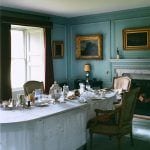

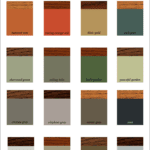






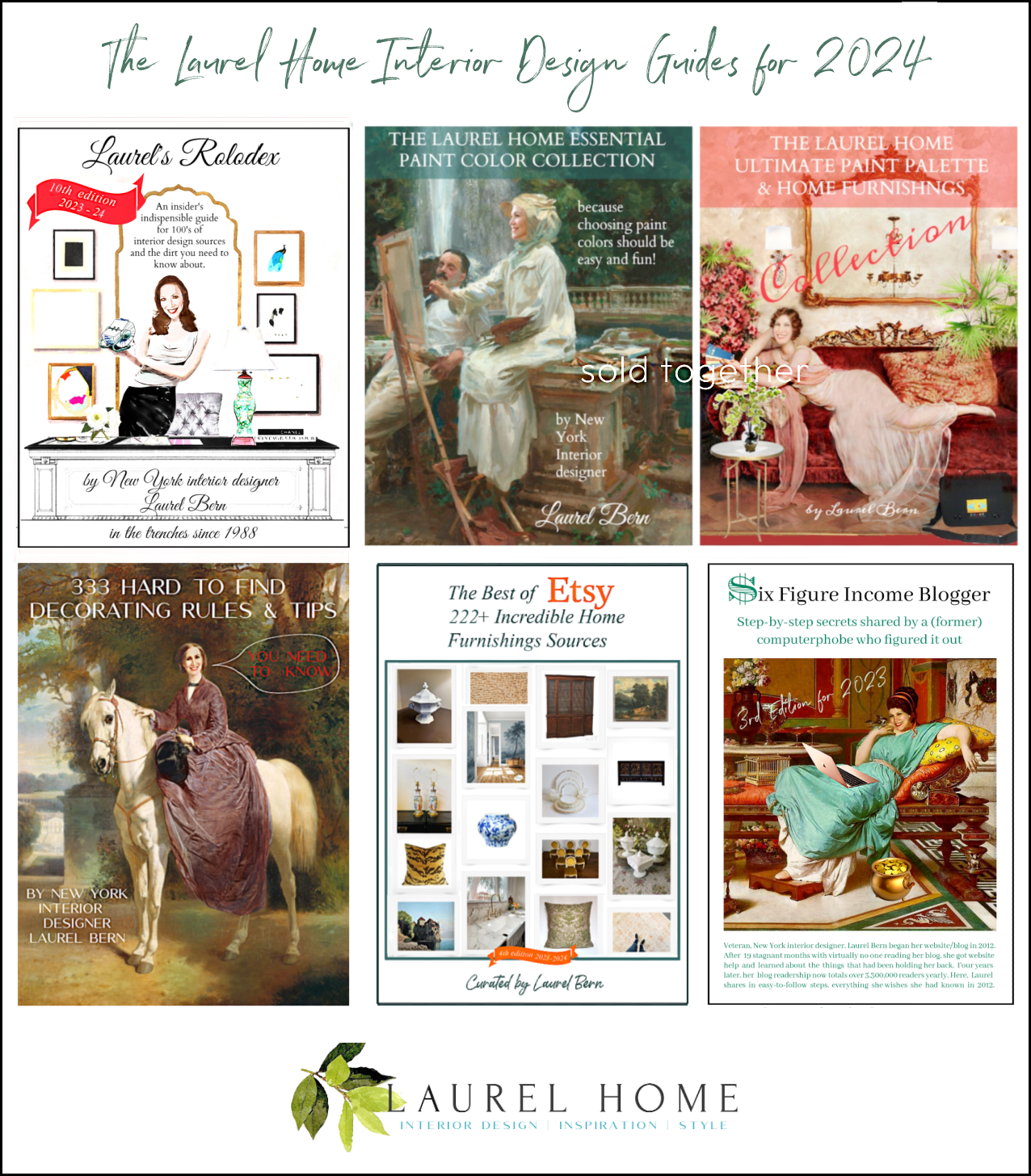



40 Responses
I took a seminar in old master techniques and they normally painted a grisaille in browns, sometimes on a toned background, and then did a combination of glazing and direct painting over it to create those marvelous silks, laces and glowy skin tones.
Perhaps your idea would work best done in a lightened sepia tint and then varnished, retouched, and then glazed over with color. I really don’t think you are going to get a good digitized result that big, even if a service cleans up the original file. You will likely get overly-done edge sharpening and flattened tones, which can look real weird, like an over-corrected real estate photo. Perhaps you should have a sample printed on paper first.
Art students often need money and many welcome the chance to earn some. Not everyone looks down on the “old masters.” You might even consider commissioning a muralist or some stage scenic painters. They have less work now and the size you want would be a piece of cake. Even as an amateur, I regularly painted backdrops 12 x 32.’
Giclee is the art standard–it is a different printing process, and you would need a very large printer, and it is expensive.
Converting to a PNG (vector) might be possible if you pick something that is already stratisfied, like the “paint by number” work you posted, or a tapestry reproduction, decorative work, maybe a fresco, which has to be painted quickly and often with separation of tones. In fact, the painting might well have been a cartoon for a tapestry–they became very intricate in that time. It appears to have been painted quite directly and thinly.
Turn of the 20th Century to c. WWII artists, like Maxfield Parrish, often painted this way–natural but slightly stylized with a separation of tones–in part influenced by the printing methods of that time, and might be worth investigating. There are many who are not well-known but painted lovely landscapes, often regional based or for decorative use, some with a bit of revivalist influence. The Hudson River school might also be worth checking out for American art in the European style.
It’s never a waste of time to soak in art, I always say. Well, I don’t ALWAYS say that. That would get boring.
Did I ever tell you about my job as a nude model for artists? Yep, I got nekkid for the sake of art. And a paycheck.
I’m all for dressing up a reproduction. I love your bathroom piece!
Hello Laurel,
I so enjoy your blog and often rt before bed as it leaves me smiling and gives me sweet dreams of beautiful homes!
Here in the twin cities in MN we have a very active artist community. One of my favorites that you might like is the accomplished award winning Mary R. Pettis. She calls her style “expressive realism”, and she uses a color pallet and style similar to some of the paintings you displayed for us all to enjoy above.
Thanks again for all you do to help us all have more beautiful homes!
Maureen
Check out the painter Eleonore Guinther (b. 1947). I have a painting of hers (scored for 75% off the last hour of the last day of an estate sale) that looks like an old renaissance landscape. I think I paid $250. My children are going to fight over it one day. The one we grabbed is nicer than anything I’ve seen of hers online, but many of hers are beautiful and not ridiculously overpriced.
Hi Laurel- On your post of Mar 24, a reader of your blog named Maxine asked me about my comment, i.e. where I saw the “Gerald Bland Look” using Barcelona chairs. The comments are now closed but it still seems relevant. It was Season 1 Episode 1 of the TV series Endeavour. Absolutely masterful mixing of old and new in an old-money English manor house, starting about 25 minutes in, and continuing for several minutes through a couple of different rooms.
Hi Laurel,
Love your style. I don’t often have time to read your blog but when I do, always enjoy… and love your sense of humor.
I have no idea how much it would cost to giclee print but probably not cheap to get it done the way you want. I am a decorative painter and graphic artist and can paint a replica. I studied art in Florence. You may not have the budget for it, but I’m happy to explore it with you if you’re interested…. and I live 8 miles NW of Boston too!
Hi Laurel, I’ve had some experience with this and have had some good results. First of all my husband sold some Old Master paintings he inherited and we kept the frames and got a company here in England called Family Copies to make copies which were basically prints on canvas with brushstrokes in varnish overtop. They are very difficult to tell apart from original paintings. However, they were very expensive so I decided to try and do it myself. First of all I found a good printer to scan and print in high resolution on canvas and then I overpainted with Golden clear acrylic gel and then varnish. You need to get very good quality printing – it’s called Giclee printing (printer). You can buy lots of prints on canvas of beautiful paintings by famous artists on eBay.co.uk and also most Museums around the world sell copies on canvas of artwork in their Museums that you could use the above techniques on.
Thank you so much, i agree
I always loved my pieces and would like to hang them.. my house is a New Orleans cottage. what i see in the shops is new.. and i love that too… i guess if you love it, do it! cheers Laurel!
Just had to comment on the print question. I have a great collection of art, including two museum prints, including Monet’s D’Hiver from the Musee d’Orsay and Prague Cathedral and some antique botanicals. There is room for all kinds of art in a collection and prints have their place as well. My collection includes old and new artists, both national and international. I love supporting talented artists. Those prints hold a special place in my heart because of the memories associated with them. They are hung properly in a place that enhances their beauty and I would never part with them! Not an art snob!
I have one too and love it.. but i put away because i wasn’t sure
Most of my art was bought years ago,, it’s dark but beautiful… is this still ok, or the new art…
Laurel, I really like the look you are going for and hope it works out perfectly! I see many people have suggested art schools already but I wanted to add my story of finding a still life that really grabbed me in a bin of student art in a college town. They were selling the whole bin for a dollar, but I only wanted the one (because the brighter than usual colors were so perfect for me). It makes me smile every time I go up the stairs!
I love your blog, appreciate your style and welcome your useful decorating tips. My general comment is that comments from folks who only write in order to denigrate, criticize or virtue signal, should just be immediately deleted without a moment’s thought.
What about tapestries? A neighbor gave us a tapestry just because she thought it would look great in a certain alcove that we had. It has an old style scene on it, made in France, and it does look “rich”. I don’t think that they are very expensive like a real painting can be.
Cece – There is also a great documentary about the discovered Rembrandt, just saw it recently with my husband, it’s called ‘My Rembrandt’. I still cannot get past the fact that Christie’s couldn’t spot it for what it was. I also tried to buy the book, but it’s no longer available. I really recommend the documentary if you want to see beautiful Rembrandts, but also a peek into the narrow, small world of dealers, enthusiasts and connoisseurs, as well as some beautiful interiors.
Hi Cynthia, I’m a Cynthia too! Your observation about the modern farmhouse movement is spot on. If I see one more “Family” or “Gather” or “Be Blessed” saying imprinted on a piece of faux-board, I think I may slit my wrists. Not there’s anything wrong with those “sayings”, but can’t people just keep them in their heads and not post them on their walls? End of rant.
What an interesting post! It’s like the NYTimes podcast timed their episode on Rembrandt to match. https://www.nytimes.com/2021/03/28/podcasts/the-daily/rembrandt-christies-jan-six.html
Oh, how cool is that! Very interesting article, too. I loved the info about how Rembrandt painted the lace collars. Extraordinarily gifted. Thanks for sharing, Cece.
I am very blessed to have lived in Laguna Beach for 15 years and now, a bit south of there for 17 years. During that time I’ve been able to accumulate some lovely oil and watercolor paintings. None by anyone famous, but all of them are landscapes of places I know and love. Then, about three years ago I took a beautiful photo of wild waves crashing at a windy bay in Maui. It’s a place we visit every year and my husband said when he passes, he wants his ashes thrown into the ocean there (sorry to be so morose, but I’m on my 2nd glass of Sunday afternoon wine). The photo is full of beautiful blues and greens which are the accent colors in my otherwise neutral home. So I sent a high-res photo image to one of those on-line student painter places and got back a stunning 60 x 44 canvas. The price was less than $300, although it cost me twice that to frame. Still, I have a beautiful piece of original art of a place that is very special to my family. I only wish the artist hadn’t signed it “Rita” because every time I look at it I think of lovely Rita – meter maid!!
Your “paint by numbers” comment reminded me that there are very sophisticated paint by number kits these days. It’s not all kittens or dogs playing poker anymore.
Canvas By Numbers (canvasbynumbers.com) actually has Van Gogh as an option. And you can also send in your own image and have a custom kit made.
They only go up to 24×32, but really that’s probably about as big as you’d want to paint yourself!
I haven’t tried them out yet, but I’m drooling over one of the Van Goghs.
So happy to help! You were right to think that most university art programs haven’t taught the classical methods for decades. But over the last 10-20 years, there has been a representational revival and, based on the passion and talent of a few living artists, these ateliers are growing and enabling younger artists to learn the craft. I can introduce you to my contacts if you would like – as I have been fortunate enough to study at two of the three I mentioned. But honestly, a call to their main admin number should do the trick – the folks in this part of the industry are just lovely! Keep us posted 😉
Holy Crap! You’re just not kidding, Jen. I just got sucked into a vortex of the most amazing young artists through these schools, on Instagram. Oh my! Classical art is alive and still happening. Thank you again!
I completely agree with Margaret. Learning to mix colors is one of the most challenging skills that artists develop. The average non-artist doesn’t have the eye to match colors. Essentially you’re talking about retouching, which is a highly advanced painting skill. Beyond that the practical considerations make this a nonstarter for me: any paint you apply will have a different texture and sheen from the original and will stick out like a sore thumb. Revarnishing or resealing a piece of that size is a major project. Just reaching the higher parts of the painting will be a challenge. Sure, you can turn it on its side and lean it against the wall but the sheer weight will make it impossible for one person to handle without damaging it. Given where you now live I would look for art students willing to produce a copy. They might even be able to get course credit for it. And you’d have the satisfaction of furthering the education of a traditional painter. What fun to research this! Thanks for the insight and resources you shared.
Okay, I see now. While theoretically possible, the whole retouching/varnish idea for these very large pieces would prove to be very difficult. Thanks for the dose, of reality, Marsha. However, I do love the varnish idea for smaller prints. Like the ones they sell on Etsy. Although one doesn’t have to go there for hi-res prints. That’s a great business, however. And, some of them do edit the images that they’re selling so that when they print, they’ll come out better. In fact, “retouching” could and should be done BEFORE the printing.
That too is a skill. For me, photo editing is one I’ve been working on for years.
I love the idea of bringing artwork into the home, especially the classics (Pre-Raphaelite Brotherhood especially). I refinish furniture and realize many years ago that often one of the problems of displaying art is the lack of wall space.
I started thinking of solutions and transferring art onto furniture (it is, after all a ‘blank’ canvas). It’s a way of turning something functional, into something interesting: perhaps a conversational starter or stopper? I wish I could share an example here, but obviously don’t have the means. Please check out my website to see examples of what you can do with digital downloads etc. I’m also on facebook. http://www.facebook.com/thepaintfactory
Very cool, Diane. Thanks for sharing.
Having studied art for 4 years and then teaching it, most people are not able to simply mix paint and apply it over an existing print. You can try it, but artists study colour theory and paint techniques for their duration at school. Good luck trying to mix the colours to go overtop of the print. I suppose people who do it all the time, could become good at it but then I have to question, why don’t you just hire a student from the fine arts department just as Jeanne is suggesting and pay them to do a copy for you. You will notice that they often create those copies while observing the original work – because no matter how great the copy, it is never going to be like the original. You need to experience the original. Another source to consider if you are going the print route is to purchase prints directly from the museums that house the original artworks. They often have good copies that can be purchased. My mother loved Dutch Renaissance painting so when she visited the Rijksmuseum in Amsterdam, she purchased 3 beautiful prints that graced our living room walls while I grew up. It’s what she could afford and it was her way of bringing a little bit of her home country to Canada. Good luck figuring it out Laurel.
Hi Margaret,
Yes, I’m sure you’re right, Margaret. I should’ve made it more clear that this would be only to hi-light areas that might not have come out so well in the printing process. Or, this is where a professional or student artist could assist. However, I am also thinking that the gel medium or varnish or whatever is the best thing to use might be enough to bring the print to life and give it that hand-painted look. One thing that could be a problem is a blown-up print with the original cracks could look ghastly with unnaturally large “cracks” That would require some delft pre-printing photo-editing pre-printing of the final piece.
Digital art is actually an art unto itself.
The Academy of Realist Art of Boston is a highly praised atelier near you, who would surely have some students who could reproduce a mastercopy as the others have suggested. There is also Grand Central Atelier in NY and Studio Incamminati in Philly, both of which I can personally recommend as fantastic art programs producing “student work” that will knock your socks off!
Amazing representational art is happening – just have to know where to look!
All the best to you, Laurel!! Love your blog- you have been helping me to understand and tackle my home decorating for years- thank you:)
Hi Jen,
Oh wow! Now we’re talking! Thank you so much. You’re right. And, it’s one reason I wrote this post. I figured out there, one of you has the answer I’m seeking. And, I’m sure, other readers as well.
This place in China will copy anything…cheap
https://europic-art.com/goods-4608.html
OR
https://www.chinaoilpaintinggallery.com/
Hi Pam,
Yes, my Melchior de Hondecoeter, (copy, of course) currently over my fireplace and formerly over my green sofa was from 1st-Art-Gallery. I’m not familiar with either of these, I don’t think. It’s a little hit and miss with these places. As I said in the post, the first go-around was horrible. It lacked the necessary detail, but not in a loose impressionistic way. But, in a really bad painting way.
Two thoughts on your problem:
Long narrow pieces seem to me to be exactly what Zuber wallpaper panels do. Zuber isn’t cheap, but it’s “the real thing” as opposed to reproduction, since Zuber is reproducing itelf, as it were.
If you’re (this is not a personal “you”) going to have a painting digitally printed onto canvas and then paint over it, why not go the whole hog and paint it yourself, using a grid system to transfer the essentials of the image to the canvas? On Friday I saw a local artist making a copy using the grid technique, and the other works displayed around her were quite successful except for a copy of a Caravaggio, which looked subtly wrong, too mechanical. If you go for a lesser artist, you’ll get away with it much better than if you go for a great master — your Italians rather than Claude Lorrain, say. Otherwise, Parnassus and Jeanne are right: art students!
One thought on the idea in general: if “you” have a magnificent Old Master painting in your room, the rest of the room has got to live up to it. This doesn’t mean a complete period piece, but it does imply TLC: tons of loose cash. At least you’ve got a head start with the architecture!
Hi Gilly,
I love Zuber. My antique screen has their beautiful paper on it. As for the rest of the room. Well, Gerald Bland’s decor is my muse.
I love that look for your home. What a great statement they will make. I started buying prints on canvas over the past few years, as I know I’ll never be able to get the look and pieces I desire any other way. I have matted and framed art too, but for my dining room and parlor, I want/need that texture. I don’t like hand painted copies, as I have seem some truly terrible ones I could have mastered in college. There are many companies doing it now, one wholly owned and run by women, which is always nice. I do try to find the original piece in a museum online, where I can make sure I am going to get a copy truly representative of the original. I also have found some great sources for frames and they are always running sales. I think the whole modern farmhouse look, with found objects and planks dominating a significant portion of the populations “design”, ditto for barn doors taking up wall space, really hit these businesses hard, so there are great savings to be found. I have been drooling over a piece in The Wallace Collection Museum in London forever. I can purchase a canvas print from them, but not quite as large as I’d like, as the original is about 7 feet long. When I order it, I am going to ask if the printer updated their copy, as I know the painting was cleaned and restored in 2017, and I want to make sure I get the best image.
Good luck Laurel and everyone who “discovers” art online…it’s been a great Covid activity and reminded me how much I enjoyed art history in College. There’s a world of art out there for anyone interested in discovering it…just a few clicks away.
Hi Cynthia,
Great points made here. That’s a great idea if having something copied is to acquire a decent size, super-high-quality print. When I was in design school, I took a course called “rendering with markers.” I did two projects where I copied photos from a magazine. It was a tremendous challenge but also a lot of fun. And, I was super happy with how they turned out. I did turn the original image into a grid and then painted what I saw in the grid. That’s a very effective technique. However, it would take me about ten years to complete a painting 50″ x 80″. lol
I had professional portfolio photos taken of those two pieces and I’m sure they are here– somewhere. lol If I find them, I’ll take photos of the photos and post them somewhere.
Hello Laurel, Adding to Jeanne’s comment, there are are art schools all over. Perhaps you or other readers could approach them about having this kind of work done. They also might have bulletin boards where you could place a notice. Many art students practice by copying masterpieces. I wonder if art schools also have framing studios?
–
A while ago I was at a Degas exhibit (you would have been drooling–in addition to the impressionist paintings, there were all the ballerinas, including some bronze ones). There was one section devoted to his early works which were copies of famous early paintings, although perhaps Degas showed particular promise as a student.
–Jim
Well, it would have to be local. I’d have to see that the student had done something similar already. Yes, I studied art history twice! Pretty much every famous artist apprenticed with another artist. One of the most interesting is Picasso whose early work looks nothing like his later abstract pieces.
Laurel, would you consider a student made reproduction? When I lived in Paris I often visited museums. Almost always I would see student artists copying old masterpieces, probably for a class assignment. I was impressed by the beauty and exactness. Students always need $ and you’d have an original if not “the” original.
Hi Jeanne,
Yes, of course I would. I did mention it in the post as an option, but I’m not sure if the kids today are doing much of this kind of painting. However, maybe I just don’t know where to look.